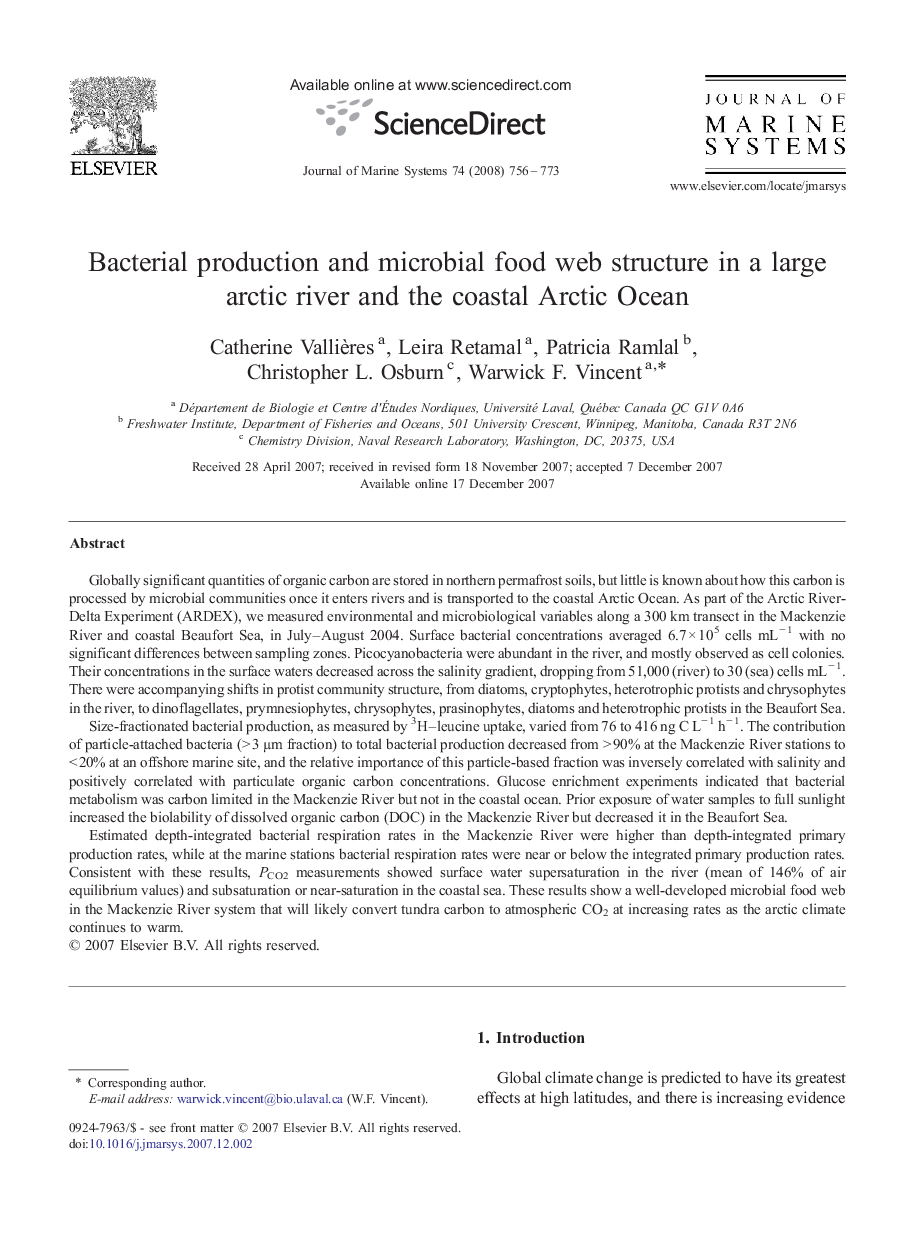| Article ID | Journal | Published Year | Pages | File Type |
|---|---|---|---|---|
| 4548760 | Journal of Marine Systems | 2008 | 18 Pages |
Globally significant quantities of organic carbon are stored in northern permafrost soils, but little is known about how this carbon is processed by microbial communities once it enters rivers and is transported to the coastal Arctic Ocean. As part of the Arctic River-Delta Experiment (ARDEX), we measured environmental and microbiological variables along a 300 km transect in the Mackenzie River and coastal Beaufort Sea, in July–August 2004. Surface bacterial concentrations averaged 6.7 × 105 cells mL− 1 with no significant differences between sampling zones. Picocyanobacteria were abundant in the river, and mostly observed as cell colonies. Their concentrations in the surface waters decreased across the salinity gradient, dropping from 51,000 (river) to 30 (sea) cells mL− 1. There were accompanying shifts in protist community structure, from diatoms, cryptophytes, heterotrophic protists and chrysophytes in the river, to dinoflagellates, prymnesiophytes, chrysophytes, prasinophytes, diatoms and heterotrophic protists in the Beaufort Sea.Size-fractionated bacterial production, as measured by 3H–leucine uptake, varied from 76 to 416 ng C L− 1 h− 1. The contribution of particle-attached bacteria (> 3 µm fraction) to total bacterial production decreased from > 90% at the Mackenzie River stations to < 20% at an offshore marine site, and the relative importance of this particle-based fraction was inversely correlated with salinity and positively correlated with particulate organic carbon concentrations. Glucose enrichment experiments indicated that bacterial metabolism was carbon limited in the Mackenzie River but not in the coastal ocean. Prior exposure of water samples to full sunlight increased the biolability of dissolved organic carbon (DOC) in the Mackenzie River but decreased it in the Beaufort Sea.Estimated depth-integrated bacterial respiration rates in the Mackenzie River were higher than depth-integrated primary production rates, while at the marine stations bacterial respiration rates were near or below the integrated primary production rates. Consistent with these results, PCO2 measurements showed surface water supersaturation in the river (mean of 146% of air equilibrium values) and subsaturation or near-saturation in the coastal sea. These results show a well-developed microbial food web in the Mackenzie River system that will likely convert tundra carbon to atmospheric CO2 at increasing rates as the arctic climate continues to warm.
